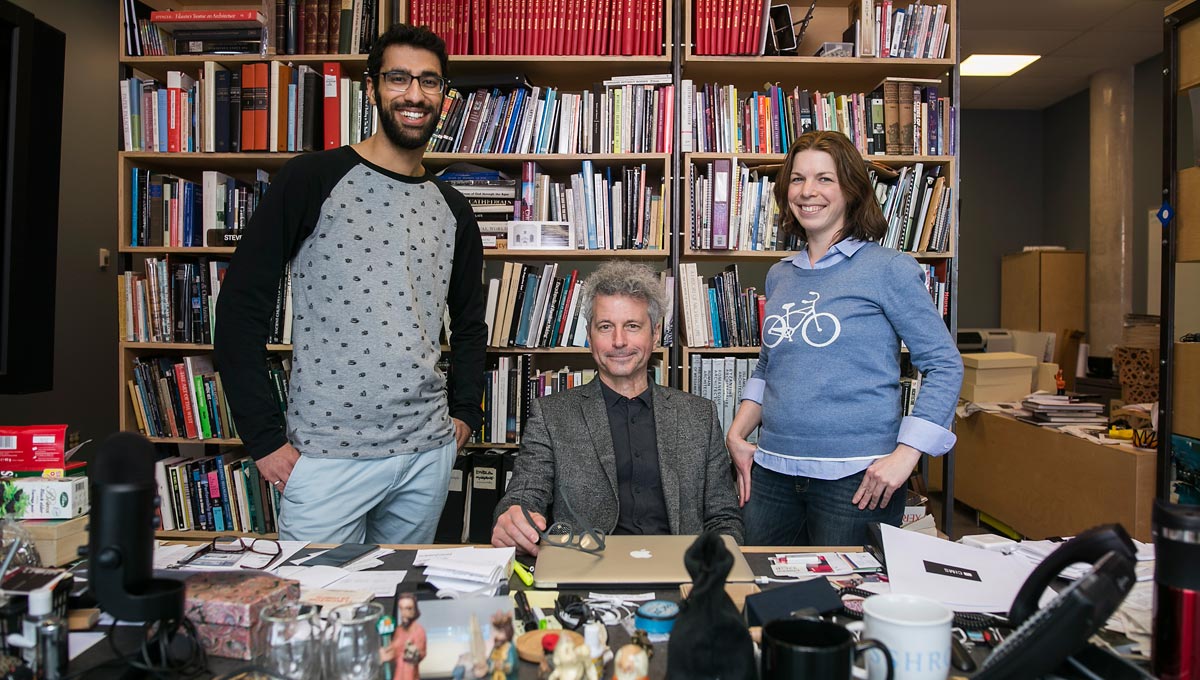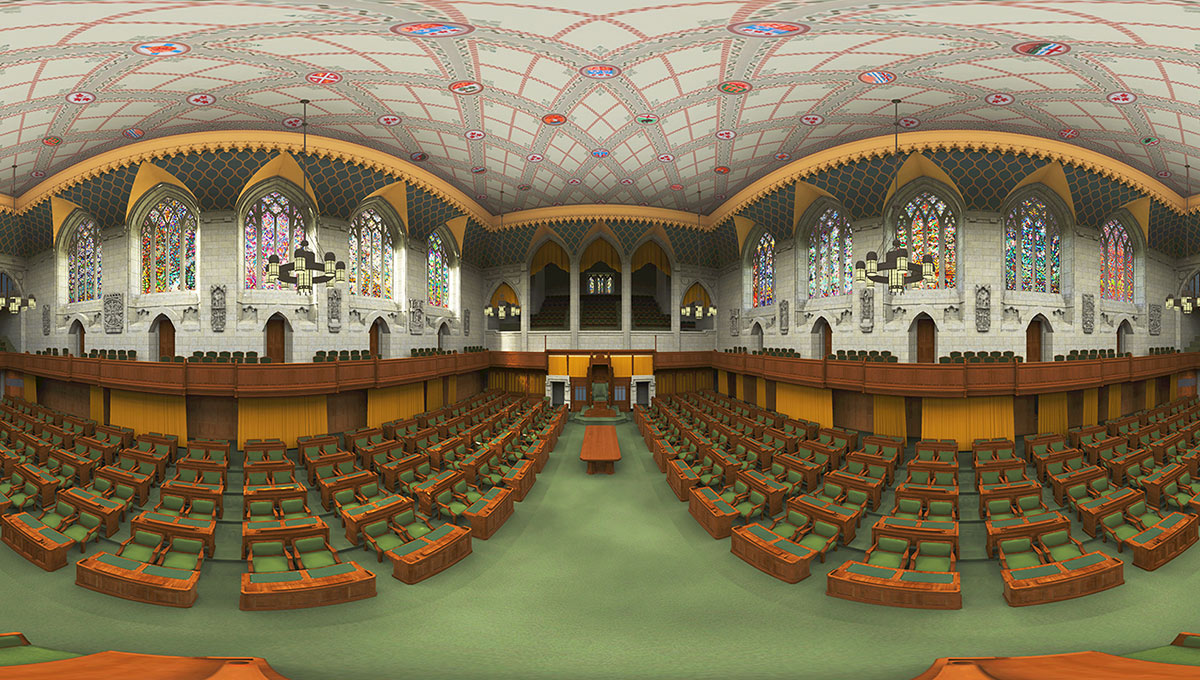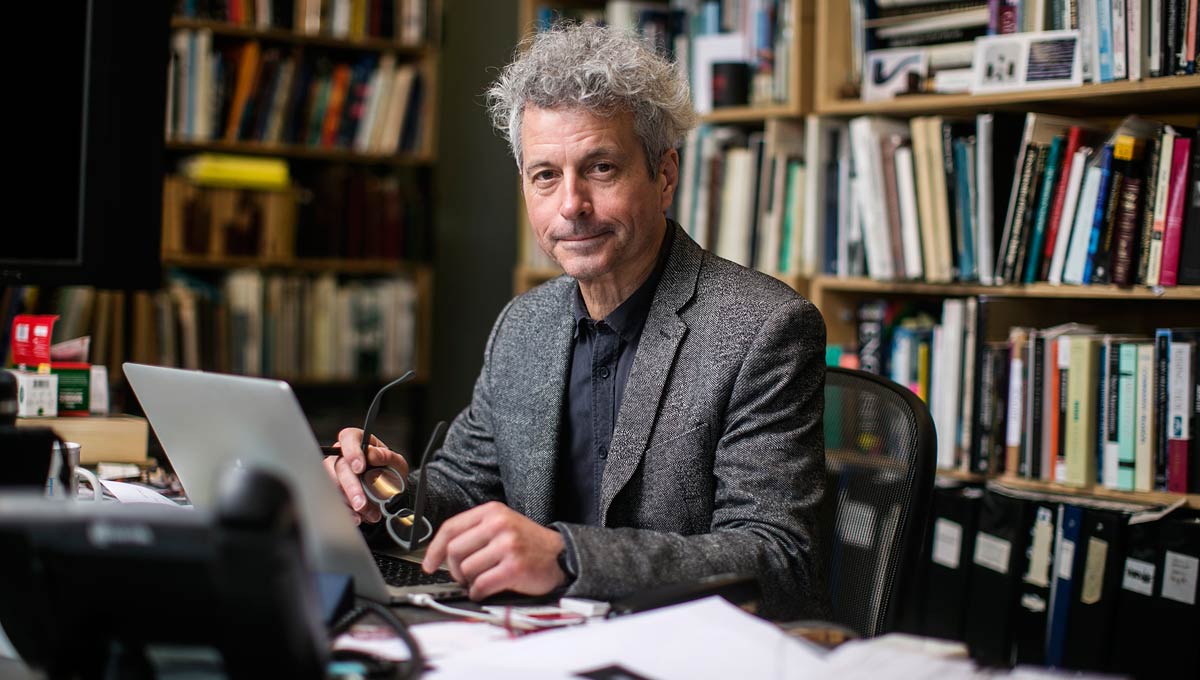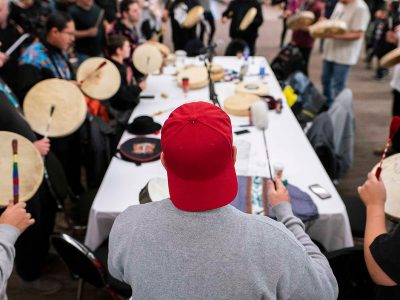By Tyrone Burke
It’s been closed since December 2018 and may not reopen for a decade. But a new virtual tour of Parliament is giving Canadians a hyper-realistic, inside look at one of Canada’s most iconic buildings that they can experience at home.
Parliament: The Virtual Experience draws upon highly detailed Building Information Models (BIM) produced by the Carleton Immersive Media Studio (CIMS) for Parliament’s long-term renovation and rehabilitation project. Using these models, the Library of Parliament and the National Film Board created a virtual tour that can be experienced with a virtual reality headset, mobile phone, or desktop computer.

Stephen Fai and Katie Graham with student Abhijit Dhanda (left)
“The Centre Block of Parliament is a unique and iconic space. We wanted to find ways to keep it accessible during the years it would be closed,” says Elizabeth MacLean, senior project coordinator of visual experience at the Library of Parliament.
“It has always been a public space, and we wanted to preserve that legacy. We looked for opportunities for a more meaningful experience than just looking at photographs. We wanted to give people a sensory experience, and luckily this dovetailed nicely with work that was happening on the architectural side. We had an opportunity to take a really innovative approach.”
The BIM model of Centre Block was created using laser scanning technology, with historic architectural drawings and engineering catalogues used for reference. The model’s complex geometry and unrealistic textures were not well-suited to virtual reality, so the team at CIMS devised a new workflow to convert them in to a working virtual reality experience. A team led by Katie Graham created a method to organize these files into a virtual experience.

Virtual Reality: Similar to In-Person Tour
“There are three different level of details in the virtual experience, and we processed each level differently,” says Graham, an instructor in Carleton’s Bachelor of Media Production and Design program who is completing her PhD in architecture.
“In large spaces like floors and walls, we used a lower polygon count. In other areas, we used photogrammetric modeling with a higher polygon count. The statue of Queen Victoria in the Library of Parliament was extremely important, and she has a higher level of detail. So do ornate carvings, and the rotunda at the entrance to Centre Block.”

Professor Stephen Fai
This new virtual experience follows a linear path that’s similar to what visitors would have experienced on in-person tours when they were available. It guides online users through the rotunda at the entrance to Parliament, the Library of Parliament, House of Commons, Senate, and the Peace Tower.
“When you are in a virtual reality headset, you can walk around. It brings you through the story,” says Graham, who led the project to create the virtual reality environment.
“A linear storyline helps us decide what to model, and also allows for more accessibility, so that an experience can reach more people. Not everyone has a VR headset. A more linear experience allows more people to understand how to enjoy it.”
CIMS specializes in using digital technologies for architectural rehabilitation, heritage conservation, and the architecture, engineering, construction, and operations industry, but virtual experiences like this one can help tell the stories behind well-known buildings.
“Prior to this project, we had been experimenting with some VR,” says Architecture Prof. Stephen Fai, director of CIMS.
“We built virtual experiences for the Parliamentary Precinct that were featured at the Welcome Centre during Canada 150, and a virtual tour of the Senate of Canada. We are still very much focused on modelling buildings, but now we also have about a dozen people working on VR experiences.”

Wednesday, May 20, 2020 in Innovation, Research, Technology
Share: Twitter, Facebook



